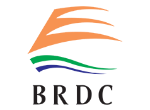
Thullal
Thullal
A Satirical Art Form
Most temple arts were once inaccessible to the general public, and even if accessible, their language and stylised performance styles were not easily understandable for the common man. In this social context of the eighteenth century, a new performance form was born - Thullal. One of the poet trinities of Malayalam, Kunchan Nambiar, was the creator of the text for Thullal and the director of the performance form. Nambiar, known for humorously portraying the socio-cultural situations of Kerala through his poems, created a performance form with a similar amount of humour, satire, and sarcastic statements, which was well accepted by the common man and still exists as one of the popular temple arts of Kerala.
Origin
According to legend, Kunchan Nambiar was an accompanying artiste for Kutiyattam and Koothu. One day, while playing the Mizhavu (the drum for Koothu and Kutiyattam) during a Chakyar Koothu performance, he dozed off. The performing Chakyar ridiculed and mocked the sleepy Nambiar in front of the live audience. Out of the insult and anger, Kunchan Nambiar created a new art form called Thullal the very next day. Thullal was characterised by its humour and simplicity in versus and language which was easily understandable and enjoyable for the local audience, compared to Koothu. So, the new art form quickly attracted the audiences that once surrounded the Chakyar (Koothu performer).
Performance
Thullal is a solo dance-theatre narrative tradition that incorporates elements of other temple arts and popular folk forms in terms of costume, music, and rhythm. Thullal texts are written in Malayalam, and the performer follows the text for verses and then creatively adds spontaneous dialogues. There is a participatory nature of communication in Thullal as the performer interacts with the audience and incorporates their expressions and comments to shape the oral version of the play. Face makeup, crowns, and costumes are stylised but the language is simple. The musical accompaniments are Mridangam (previously Thoppi Maddalam), cymbals, and Edakka (a later addition). The accompanying artist who plays the cymbals repeats the verses recited by the performer.
Thullal has three distinct variations named Sheethangan Thullal, Ottan Thullal, and Parayan Thullal. Each form differs in terms of costume, speed, and slight musical and rhythm variations. Among the three, Ottan Thullal is the fastest version and the most popular one. Although Thullal is known for its satirical statements, the art form is structured with strictly codified movement patterns, footwork, rhythmic variations, gestures, and facial expression techniques. Eye movements, facial expressions, and hand gestures used in Thullal are directly influenced by other art forms like Kathakali and Kutiyattam. The stories are from the Hindu epics, and the actor connects situations and characters with contemporary social events and people. Thullal is widely performed all over Kerala as part of temple festivals, regional festivals, and also at various public festival venues. In the 20th century, as part of institutionalizing traditional performance forms, Thullal received support from the Kerala Kalamandalam. This institution established a training system and codified the performance tradition for Thullal, mainly focusing on Ottan Thullal. Kerala Kalamandalam Deemed to be University now offers academic programs in Thullal, and there are other private institutions and teachers across Kerala who provide training in this art form.
E-Brochures
These digital guides serve as invaluable tools for travellers planning their Kerala vacations.
A chronicle of Kerala’s Cultural Richness
Much of Kerala’s art forms are so unique to the land’s folklores and culture. They are inspired by age-old traditions, customs, and even the diverse ways of life of the people. A short list of some of the best recommendations for you is given in here. Enrich yourself with these once-in-a-lifetime experiences. Be blessed abundantly by the God’s Own Country.
Theyyam, the Dance of the Divine
A blend of dance, music and fervent devotion, Theyyam is an ancient ritualistic form of worship. Performed at temples or traditional houses especially in Kerala's Kannur and Kasaragod districts, Theyyam has in course of time developed regional variations. The Dance of the Divine presents a comprehensive account of this ancient ritual
Other Performing Artforms
Also, do not miss out on these
Other Artforms
Subscribe to our Newsletter
Sign up for Kerala Tourism's monthly newsletter to learn about our events, offers and more…
















































